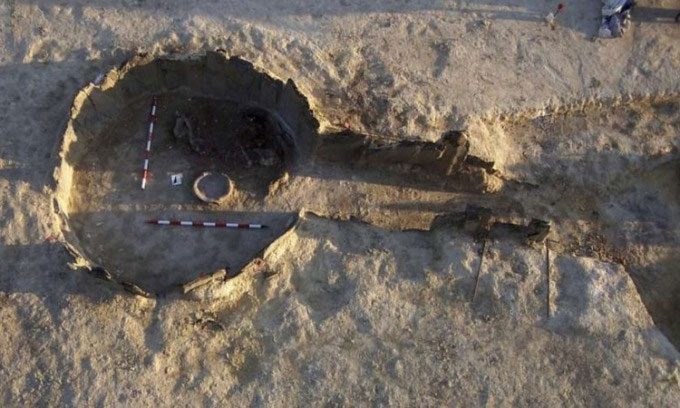Archaeologists have discovered that the owner of a tomb filled with ivory and a crystal dagger in Spain is actually a woman, contrary to initial assumptions that it was a man.
When archaeologists first uncovered the 5,000-year-old tomb in Spain, they believed the interred individual was male. The tomb also contained a crystal dagger, ivory, and many other luxurious items. However, they now conclude that the tomb’s occupant is a woman, according to a study published on July 6 in the journal Scientific Reports.

The tomb containing the remains of the Ivory Lady. (Photo: University of Seville).
The research team utilized a new method to determine gender through dental enamel analysis. This technique, developed five years ago, is more reliable than analyzing remains under poor conditions. Most details about the life of the “Ivory Lady” remain a mystery, but there are some clues. “The woman was buried alone in the tomb with unique artifacts,” said Leonardo Garcia Sanjuan, an archaeologist at the University of Seville, Spain. “This indicates that this person was very special.”
The tomb is located a few kilometers west of Seville, near the southern coastal region of Spain, and was excavated in 2008. Initially, archaeologists thought the tomb contained the remains of a young man based on the examination of poorly preserved bones and several valuable items in the tomb, including ostrich eggs, amber, ivory, and a dagger, suggesting the individual held a high social status.
The new technique identified differences in the chemical composition of dental enamel between men and women, applicable even when full DNA is not available. Marta Cintas-Pena, an archaeologist at the University of Seville, compiled a database of Bronze Age tombs across 21 archaeological sites on the Iberian Peninsula, which includes Spain and Portugal. Currently, the database contains records of 1,723 individuals. Based on this, the research team notes that the tomb of the Ivory Lady is quite exceptional.
In the approximately 250 years following the burial of the Ivory Lady, new tombs were built around it but always remained outside a 30-meter radius. About 80 years after her death, people continued to enter the tomb and leave additional offerings inside, including the crystal dagger.
The research team knows very little about the social structure during the time the woman lived. The Ivory Lady lived during the era when pharaohs ruled the Nile Valley in Egypt and built the first city along the Euphrates River in Mesopotamia.
- The remains of a 5-year-old bride in an ancient tomb reveal a heartbreaking period in ancient Chinese history
- The most romantic ancient tomb in the world: A couple embraced for 1,600 years
- The mysterious hand in a 3,000-year-old tomb: Excavating tens of thousands of other tombs without finding a second one


















































